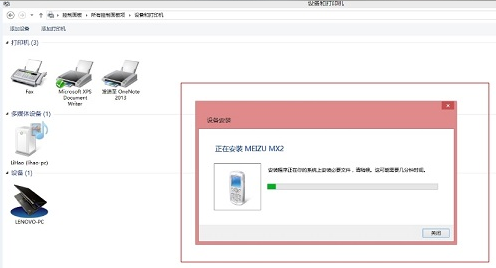I am just starting with Django and want to create a model for an application.
I find Djangos feature to
- automatically define validations and html widget types for forms according to the field type defined in the model and
- define a choice set for the field right in the model
very usefull and I want to make best use of it. Also, I want to make best use of the admin interface.
However, what if I want to allow the user of the application to add fields to the model? For example, consider a simple adress book. I want the user to be able to define additional atributes for all of his contacts in the admin settings, i.e. add a fax number field, so that a fax number can be added to all contacts.
from a relational DB perspective, I would have a table with atributes (PK: atr_ID, atr_name, atr_type) and an N:N relation between atributes and contacts with foreign keys from atributes and contacts - i.e. it would result in 3 tables in the DB. right?
but that way I cannot define the field types directly in the Django model. Now what is best practice here? How can I make use of Djangos functionality AND allow the user to add aditional/custom fields via the admin interface?
Thank you! :)
Best
Teconomix
I've used this approach, first seen in django-payslip, to allow for extendable fields. This provides a structure for adding fields to models, from which you can allow users to add/edit through standard view procedures (no admin hacking necessary). This should be enough to get you started, and taking a look at django-payslip's source code (see the views) also provides view Mixins and forms as an example of how to render to users.
class YourModel(models.Model):
extra_fields = models.ManyToManyField(
'your_app.ExtraField',
verbose_name=_('Extra fields'),
blank=True, null=True,
)
class ExtraFieldType(models.Model):
"""
Model to create custom information holders.
:name: Name of the attribute.
:description: Description of the attribute.
:model: Can be set in order to allow the use of only one model.
:fixed_values: Can transform related exta fields into choices.
"""
name = models.CharField(
max_length=100,
verbose_name=_('Name'),
)
description = models.CharField(
max_length=100,
blank=True, null=True,
verbose_name=_('Description'),
)
model = models.CharField(
max_length=10,
choices=(
('YourModel', 'YourModel'),
('AnotherModel', 'AnotherModel'), # which models do you want to add extra fields to?
),
verbose_name=_('Model'),
blank=True, null=True,
)
fixed_values = models.BooleanField(
default=False,
verbose_name=_('Fixed values'),
)
class Meta:
ordering = ['name', ]
def __unicode__(self):
return '{0}'.format(self.name)
class ExtraField(models.Model):
"""
Model to create custom fields.
:field_type: Connection to the field type.
:value: Current value of this extra field.
"""
field_type = models.ForeignKey(
'your_app.ExtraFieldType',
verbose_name=_('Field type'),
related_name='extra_fields',
help_text=_('Only field types with fixed values can be chosen to add'
' global values.'),
)
value = models.CharField(
max_length=200,
verbose_name=_('Value'),
)
class Meta:
ordering = ['field_type__name', ]
def __unicode__(self):
return '{0} ({1}) - {2}'.format(
self.field_type, self.field_type.get_model_display() or 'general',
self.value)
i would suggest storing json as a string in the database, that way it can be as extendable as you want and the field list can go very long.
Edit:
If you are using other damn backends you can use Django-jsonfield. If you are using Postgres then it has a native jsonfield support for enhanced querying, etc.
Edit 2:
Using django mongodb connector can also help.
You can use InlineModelAdmin objects. It should be something like:
#models.py
from django.db import models
class Person(models.Model):
name = models.CharField(max_length=100)
class ContactType(models.Model):
name = models.CharField(max_length=100)
class Contact(models.Model):
person = models.ForeignKey(Person, on_delete=models.CASCADE)
contact_type = models.ForeignKey(ContactType, on_delete=models.CASCADE)
value = models.CharField(max_length=100)
#admin.py
from django.contrib import admin
class ContactInline(admin.TabularInline):
model = Contact
class PersonAdmin(admin.ModelAdmin):
inlines = [
ContactInline,
]
By the way... stackoverflow questions should contain some code. You should try to do something before asking a question.





